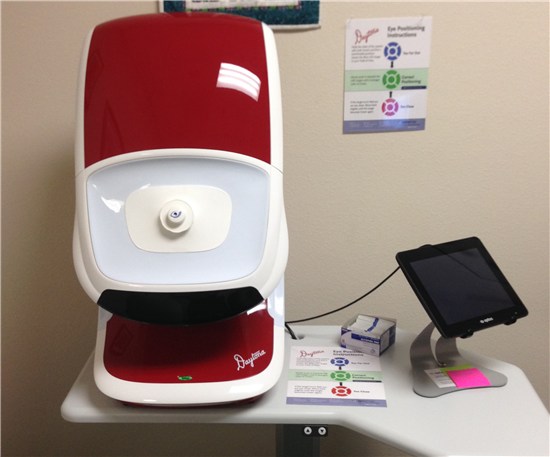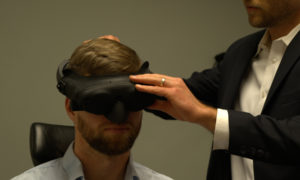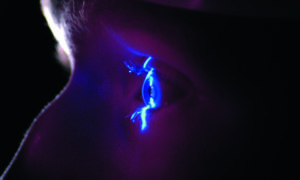By Eric M. White, OD
SYNOPSIS
A retinal imaging camera elevates your level of care in monitoring retinal health and equips you to participate fully in medical eyecare.
ACTION POINTS
CALCULATE BREAK-EVEN POINT: You will need to see38 patients per month to meet your monthly lease payment.
CALCULATE ROI: Costs about $85,000 and can generate over $9,000 per month.
EDUCATE PATIENT IN EXAM ROOM. Explain why you’re taking the pictures, and e-mail images to the patient.
Retinal imaging technology is an investment that will pay off for both you and your patients. My practice, which uses Optos Daytona, has found the level of care we provide to patients enhanced, along with an increase in our revenues. Optos uses a scanning laser system to get a clearer, wider picture of the the retina, offering us incredibly in-depth images. With the instrument’s auto-luminance screening, you can see hemorrhaging and even more of the retina than a straight retinal camera can provide.
ROB Bottom Line:
Optos Retinal Imaging Camera
Full Purchase Price: About $85,000
Leased: Approximately $1,700 per month with dollar buyout
Billed: $45 per image
Break-Even Point: 38 patients per month
Revenues: More than $9,000 per month on average
Calculate Needed Investment & ROI
My practice has leased the Optos Daytona for approximately $1,700 per month with a dollar buy-out. The full-purchase price is about $85,000. I like to lease with a dollar buy-out to avoid using all the cash in the practice. I need to capture 38 patients a month to break even, but my average profit per month is over $9,000 making this a very profitable center in my office. We purchased the instrument last year, and we were profitable the first month.
We charge $45 for the image–$39 for VSP patients. With our lease payment and 90 percent patient acceptance, we are making money every month. I feel the secret behind our high percentage of patient acceptance is to take the picture in the pre-testand then have the doctor explain why we need it. Our acceptance doubled when we took this approach.
The instrument is small, sitting on top of a table in our pre-testing area with no extra space on the floor required.
Offer to Every Patient and Educate
We use the optos on nearly every patient. For children under 10, we will do it the fist year, but wait for a few years after that. Ideally, I’d like a baseline on all patients, but to save money for parents, we stretch it out. I feel this shows the patient we care and are not just doing it for a profit. I feel it is important that the doctor explain why the patient needs to spend the money. When the doctor is prescribing a test, the patient is more willing to accept it. I feel the doctor should provide this education in the exam room because we are the doctor and we can best explain why we want to get a complete picture of the back of the eye to monitor the patient’s eye health.
It just takes two minutes from start to finish to take the pictures. The actual picture is less then a second. Then it is transferred to the exam rooms. I take one minute to show them the image and explain what they are seeing. Patient education has a huge impact, especially for referrals. The instrument integrates with our EHR, so the images are automatically transferred to the patient’s file. We e-mail patients the pictures for their records and kiddingly ask them if they plan to use it as a screen saver. Offering patients these images, along with the doctor’s explanation, is a huge practice builder, showing patients our high level of care and reinforcing the doctor’s expertise.
Short Training Time, Intuitive to Use
It took just an initial half-hour of optos training, and everybody on our staff got it.The full implementation training is two hours—well worth every minute. The instrument takes the picture automatically when the patient is in the right spot to give the most optimal picture possible, with little chance of error.
Related ROB Articles
Corneal Topographer: Elevate Care and Profits
Diabetes Screener: Identify Diabetics Early and Non-Invasively
Wavefront Analyzer: Do In-Depth Diagnostics in Less Time
 Eric M. White, OD, is the owner of Complete Family Vision Care in San Diego, Calif. To contact him: Emwhiteod@aol.com.
Eric M. White, OD, is the owner of Complete Family Vision Care in San Diego, Calif. To contact him: Emwhiteod@aol.com.



























